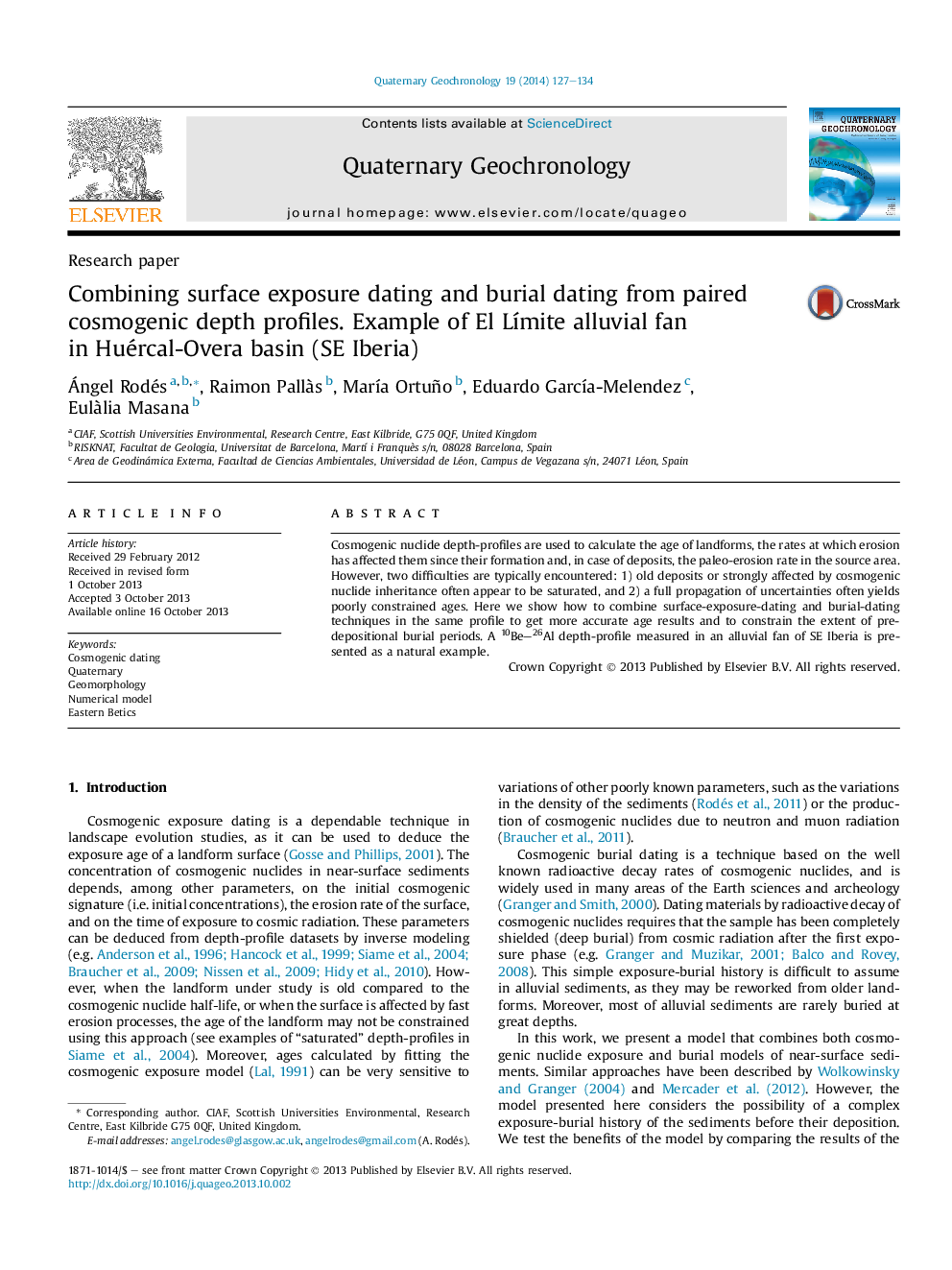| Article ID | Journal | Published Year | Pages | File Type |
|---|---|---|---|---|
| 4725006 | Quaternary Geochronology | 2014 | 8 Pages |
•Combined surface exposure and burial dating provides robust minimum and maximum ages.•It also provides constraints for the exhumation rate and sediment residence time.•Results suggest that El Límite alluvial fat was deposited in the Late Pleistocene.•El Límite sediments were reworked due to the activity of the South-AMF.
Cosmogenic nuclide depth-profiles are used to calculate the age of landforms, the rates at which erosion has affected them since their formation and, in case of deposits, the paleo-erosion rate in the source area. However, two difficulties are typically encountered: 1) old deposits or strongly affected by cosmogenic nuclide inheritance often appear to be saturated, and 2) a full propagation of uncertainties often yields poorly constrained ages. Here we show how to combine surface-exposure-dating and burial-dating techniques in the same profile to get more accurate age results and to constrain the extent of pre-depositional burial periods. A 10Be–26Al depth-profile measured in an alluvial fan of SE Iberia is presented as a natural example.
